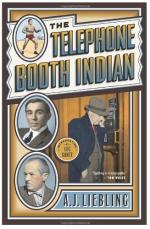|
This section contains 269 words (approx. 1 page at 300 words per page) |
The first telephone provided for public use was installed at the New Haven office of the Connecticut Telephone Company on June 1, 1880. In Great Britain, "Call Office Suites" were established in 1882 by the National Telephone Company at the Stock Exchange and Baltic Exchange in London and at the Wool Exchange in Bradford. Users paid an attendant, who allowed them access to the locked booths. Regular users had subscriber's keys and could use the phones at any time.
The first coin-operated public phone was installed at the Hartford Bank in Connecticut by the Southern New England Telephone Company in 1889. In 1891, William Gray--the inventor of the coin mechanism--formed Gray Telephone Pay Station Company and began renting coin-operated phones to storekeepers. England's first coin-operated telephone was installed in April of 1906 at the Ludgate Circus Post Office by the Western Electric Company. The first telephone kiosk (booth) appeared in England in 1908, featuring a door that opened after coins were deposited and, from 1912 until the beginning of the first World War, doodle pads to discourage users from defacing the walls.
Most early public telephones were operated on a post-payment system, that is, when a call was finished, the user was told by the operator how many coins to deposit. Multi-coin prepayment boxes first appeared in 1925. With the advent of cellular telephones, the need for public phone booths has somewhat decreased, although they are still actively used by many people, particularly at airports and hotels.No longer the bi-fold door, wooden booths of yesterday, phone booths are often made of metal. Some even offer phones that provide Internet access, for a fee.
|
This section contains 269 words (approx. 1 page at 300 words per page) |


